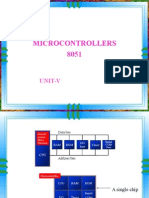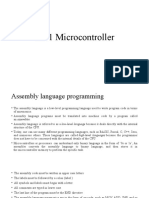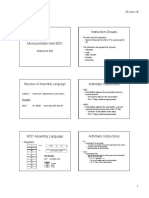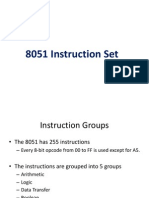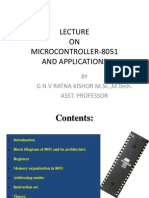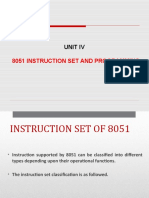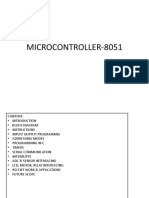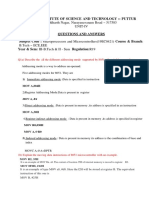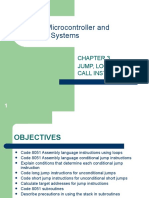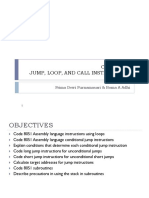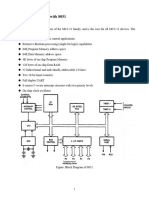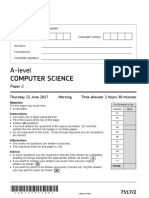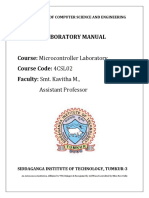0% found this document useful (0 votes)
61 views66 pagesUnit 3-2
The document provides an overview of the 8051 instruction set, detailing various instruction classifications such as data transfer, arithmetic, logical, and branching instructions. It also covers specific instructions for stack management, subroutines, and interrupts, along with programming exercises to illustrate these concepts. Additionally, it explains the use of unconditional and conditional jumps, as well as bit manipulation instructions for accessing individual bits of I/O ports.
Uploaded by
vijayCopyright
© © All Rights Reserved
We take content rights seriously. If you suspect this is your content, claim it here.
Available Formats
Download as PDF, TXT or read online on Scribd
0% found this document useful (0 votes)
61 views66 pagesUnit 3-2
The document provides an overview of the 8051 instruction set, detailing various instruction classifications such as data transfer, arithmetic, logical, and branching instructions. It also covers specific instructions for stack management, subroutines, and interrupts, along with programming exercises to illustrate these concepts. Additionally, it explains the use of unconditional and conditional jumps, as well as bit manipulation instructions for accessing individual bits of I/O ports.
Uploaded by
vijayCopyright
© © All Rights Reserved
We take content rights seriously. If you suspect this is your content, claim it here.
Available Formats
Download as PDF, TXT or read online on Scribd
/ 66








